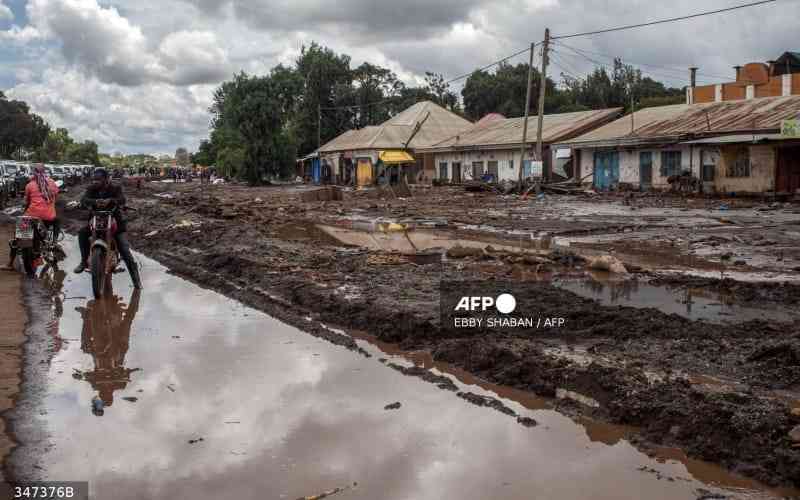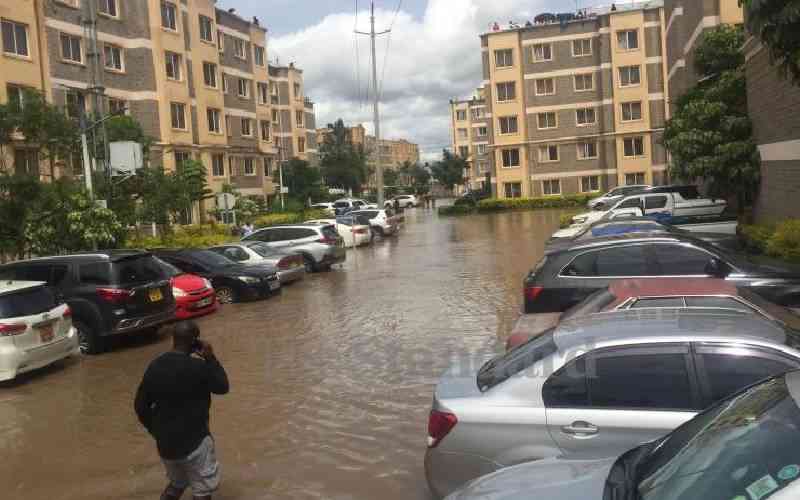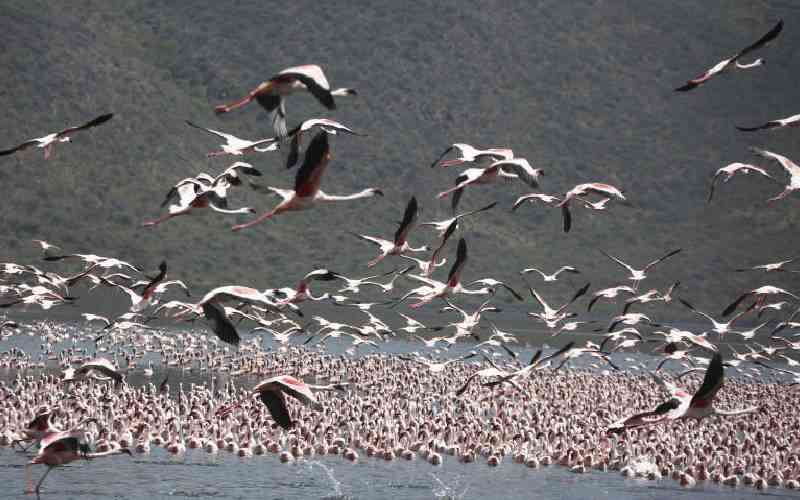The oncoming El Nino rains could be more devastating than that of the 1997-98 period that killed more than 2,000 people and destroyed property.
Already the El Nino rains are believed to have started in some parts of the world specifically in Los Angeles, US, which on Tuesday night received the heaviest rains in four years.
"Of course it may not necessarily enter so dramatically but could just creep in slowly like any other normal short rains season," says environmentalist Isaac Kalua of the Green Africa Foundation.
The Kenya Meteorological Department had warned of the 1997-98 El Nino almost four months before it began but it was not until November 1997 that Kenyans realised these were not normal rains.
An exit report prepared by the University of Nairobi for the United Nations says the warning was however not taken seriously and hence no mitigation nor emergency response measures had been put in place.
"In general, a sizable percentage of the Kenyan population were aware of the impending heavy rainfall in advance, but did very little to safeguard against their effects," says Fredrick Karanja, the study leader.
Data indicates that many parts of the country had received almost 15 times above the normal rains experienced during the short rains season.
The Ministry of Agriculture estimates some 2.3 million animals died with the highest, 1,120,635 being goats and 795,119 sheep from disease, hunger and drowning.
Areas such as Central Kenya with high population density, deforestation and high water retentive soils experienced high incidents of landslides and loss of property and lives.
But the most devastating landslide in the 1997 El Nino occurred on January 17, 1998 near the Kibwezi market along the Nairobi-Mombasa highway.
A report by a senior lecturer at the University of Nairobi, Prof Wilson M Ngecu, shows the Kibwezi landslide damaged about three kilometres of the highway, effectively cutting off Mombasa from the rest of the country. At some point some 300 loaded containers were submerged in water at the port of Mombasa.
The most dramatic landslide which shocked the nation occurred on January 3, 1998 along the Embu-Meru highway and washed away a three-kilometre section of the highway. The landslide washed away a moving bus which was carrying about 70 passengers into a deep ravine on the slopes of Mt Kenya, and 36 passengers were killed.
It was estimated that the rains adversely affected 1.5 million people, with 77,000 of them displaced. They also contributed to about 2,000 deaths.
"Today an El Nino of such magnitude could lead to a worse outcome, especially with the continued destruction of the Mau and other water catchment areas," says Kalua.
Of greater concern, he says, are the highly populated slum communities in Nairobi and other urban areas where most water ways have been blocked.
Stay informed. Subscribe to our newsletter
"The boom in construction, including roads, could compound the problem with many quarries left open or poorly reclaimed. Many roads have cut through mountainous areas making the edges good candidates for landslides," he told The Standard on Sunday.
According to the UN report an estimated 100,000km of road network covering both the urban and rural areas were destroyed.
"An estimated $51million was required as emergency funds to repair both the rural and urban road network and 13 major bridges in the country.
A Word Bank Emergency recovery project report indicates the dank loaned Kenya $40 million for the repair of roads infrastructure. The report indicates the project was completed satisfactorily but with some misgivings.
"Because of corruption in government, the World Bank had demanded quarterly financial audits which made the credit more expensive. The cost of these audits was borne by the borrower as a part of the credit," says the report.
But even with this caveat the government bureaucrats managed to delay the commencement of the project by seven months. Even after all the issue of the credit had been worked out by October 1998 it was not until April the following year that the project took off while bureaucrats were trying to corrupt the systems.
"Seven months of implementation start-up time were wasted on an 'emergency" project," says the project report.
On September 7 this month the Kenya Meteorological Department director, Mr James G Kongoti, warned of a 90 per cent chance that an El Nino will hit by October and could go up to January. But by Friday international weather experts said the chances of a major El Nino occurring had risen to 97 per cent.
Apart from possible flooding, mudslides and rainstorms Kongoti warned that the period may see a spike in malaria and other water-borne diseases.
"The likelihood of the outbreak of Rift Valley Fever is potentially likely in North Eastern parts of the country and at the Coast.
To prepare for this Kingoti recommends the stock piling of malaria medicines and vaccinating livestock against the Rift Valley Fever.
By mid July 1998, some 472,528 cases of malaria with 2,705 deaths and 44,833 cases of cholera with 2,525 deaths, had been reported. The Rift Valley Fever killed more than 400 people in North Eastern and hundreds of cattle.
The World Bank estimated a loss of Sh232 million in the agriculture sector in the 1997 El Nino with a reduction of coffee production by 22 per cent the following year,
Speaking to journalists last week the Chief Executive at the Kenya Flower Council, Jane Ngige, said a prolonged El Nino event could negatively affect the sector.
"El Nino is likely going to affect production by damaging infrastructure or leading to diseases associated with increased moisture," Ngige said.
Whatever the volume of rains, Kalua says, places such as North Eastern may face food shortages in the coming months unless supplies are urgently stocked close to those areas.
Due to massive road and bridge destruction in 1997 the government had to deploy the Kenya Defence Forces to airlift food and water supplies to parts of the country that had been cut off.
After plea for help, Western governments donated supplies as well as aircraft to transport the same.
 The Standard Group Plc is a
multi-media organization with investments in media platforms spanning newspaper
print operations, television, radio broadcasting, digital and online services. The
Standard Group is recognized as a leading multi-media house in Kenya with a key
influence in matters of national and international interest.
The Standard Group Plc is a
multi-media organization with investments in media platforms spanning newspaper
print operations, television, radio broadcasting, digital and online services. The
Standard Group is recognized as a leading multi-media house in Kenya with a key
influence in matters of national and international interest.
 The Standard Group Plc is a
multi-media organization with investments in media platforms spanning newspaper
print operations, television, radio broadcasting, digital and online services. The
Standard Group is recognized as a leading multi-media house in Kenya with a key
influence in matters of national and international interest.
The Standard Group Plc is a
multi-media organization with investments in media platforms spanning newspaper
print operations, television, radio broadcasting, digital and online services. The
Standard Group is recognized as a leading multi-media house in Kenya with a key
influence in matters of national and international interest.








